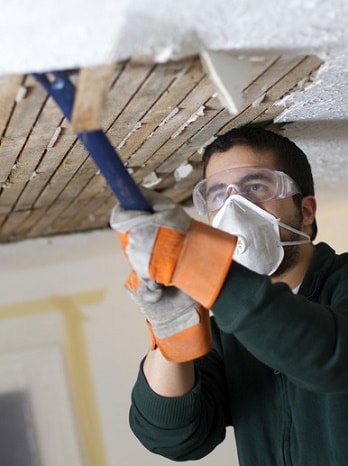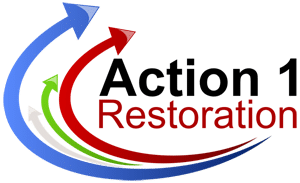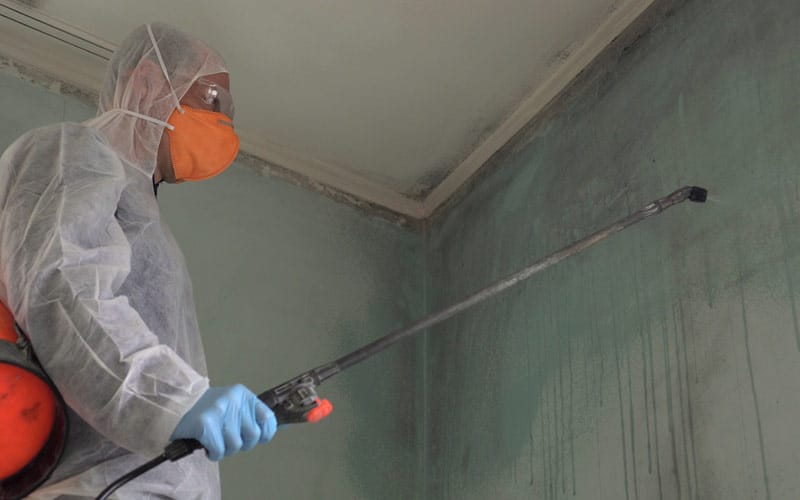Which is More Effective, Vinegar or Bleach to Kill Mold?
At Action 1 Restoration, our company is committed to helping homeowners recover from flooding in their homes. While many of these properties have straight-forward cleanups, others require more care because mold is present. In situations like these, it’s crucial to kill the mold in addition to taking the normal steps that are required for successful restoration. While this means more time and work, it’s essential for creating a safer home that doesn’t put homeowners and their families at risk for mold-related illnesses.
Is Your Home at Risk for Mold?
FEMA estimates that mold will appear inside of a home that has been damaged by water within 24-48 hours. This is why homeowners must act fast and have their homes dried as soon as possible. However, we know this isn’t always possible for homeowners who are dealing with inclement weather or surprise leaks. In these situations, it’s likely that mold will already be present and potentially growing in several different parts of the home.
If you’ve had water that has been in your home for more than a few days, mold has likely started growing. It’s easy to identify this by looking for fuzzy black or brown dots on your floors, walls, or even furniture. However, mold can also be hidden underneath floorboards, behind walls, and on top of the ceiling, making it difficult to spot. This is why mold removal is crucial if you’ve recently had any degree of water damage in your home.
Where Can Mold Grow?

Why is Mold Dangerous?
When mold grows inside of a home with water damage, it will destroy drywall, wood, and any other materials that it’s growing on. If it’s not taken care of, mold will continue to destroy these materials and eventually weaken the structure of a home. Making mold even more dangerous is the fact that it can negatively impact the health of your family by causing mold asthma and other allergic reactions. Breathing in the spores of mold will continue to worsen your health over time, which is why we never recommend living in a home with active mold growth.
Bleach vs Vinegar to Kill Mold
When it comes to killing mold, vinegar and bleach are some of the most common solutions that are used. With both being easy to find, homeowners can quickly buy them to tackle the mold in their homes as soon as possible. While some individuals prefer using one over the other, most just want to use the solution that works the best. While both can have a place in a clean home, when it comes to killing mold we recommend using vinegar.
What’s unique about vinegar in relation to mold removal is the fact that it can kill mold at the base by penetrating through porous materials. This is different from bleach, which will only kill surface mold and will not penetrate through the materials that have been affected. This means vinegar will ultimately kill the growth at the root, which is crucial for fully eliminating mold. If you only clean the surface, then the mold will eventually return in days or weeks and you’ll be right back where you started.
According to the EPA, bleach should not be used during mold cleanup because mold spores will remain in the pores of the impacted material. They also urge homeowners to practice safe cleanup practices by not mixing bleach with other cleaning solutions, including those that contain ammonia, because these can produce fumes that are dangerous and toxic. Instead, use vinegar that will penetrate deep into the materials and get rid of mold in the most effective manner possible.
Steps to Clean Up Mold in a Water Damaged Home
Step 1. Get the Excess Water Out
You can’t effectively remove mold without first removing standing water and moisture from your home. To do so, haul out the excess water with buckets or a wet/dry vacuum. Although this won’t get rid of the mold, it will eliminate the breeding grounds that allow it to thrive. At Action 1 Restoration, we know this can be difficult and stressful if this is your first experience with flooding. For this reason, we recommend reaching out to a professional if you need help.
Step 2. Remove the Moisture
The next step in resolving mold growth in your home is to dry out the area that still has moisture. To do this, you’ll need large industrial fans that will maximize the amount of air that is circulated in the room. These will blast more air directly onto the affected materials, which can dry them out in a more time-effective manner. In most situations, you’ll need more than one industrial fan to accomplish this. If you don’t have these, it may be beneficial to hire a restoration team that will come to the job with all the tools that are required to get the job done.
Step 3. Remove Materials
Any materials that are too damaged to be saved should be promptly removed once the home is completely dry. It’s important to replace these as soon as possible to protect the structural integrity of the home. If any of these materials have mold on them, dispose of them in a heavy-duty trash bag.
Step 4. Clean the Mold
The first step to cleaning mold from your home is to put on protective gear to stay safe. This should include gloves and a mask, although our team at Action 1 Restoration highly recommends plastic suits to avoid getting mold on your clothing as well. Once you’re prepared, you’ll need to pour white vinegar into a spray bottle, without diluting it like you would for traditional household cleaning. When it comes to removing mold, you always want to use vinegar undiluted to ensure it is as effective as possible.
Next, spray vinegar onto the areas of the home that have experienced mold growth. Although it may be tempting to scrub them down with a sponge, we recommend letting the vinegar sit for at least an hour so it’s able to penetrate deep into the material and tackle the mold at the base. Once an hour has passed, grab a small bucket and combine 4 cups of water with 2 teaspoons of baking soda. Mix well and pour into a separate spray bottle.
Spray the baking soda mixture onto the areas with mold and scrub with a stiff sponge or any other type of scrubbing brush. Make sure you have protective gear on at this point, including a breathing mask and gloves to avoid direct contact. Once you’ve successfully scrubbed all materials with mold on them, you’ll need to rinse them with warm water and pat dry with a towel. To finish the cleaning process, spray the area once again with the vinegar mixture and let it sit until completely dry.
Restoring Your Home After Mold
Mold removal can add to the time it takes to restore your home after water damage. However, it’s crucial in eliminating the dangers that mold can present. Our team at Action 1 Restoration strongly recommends hiring a professional to have a mold inspection completed. A restoration technician can do a full inspection of your home and may potentially find moisture or mold that was missed. This kind of inspection can give you peace of mind, knowing that you can move on and finish the restoration with a safe space.
The silver lining in restoration is that once mold removal is done, the process of making your house whole again is relatively simple. Once damaged materials have been replaced and walls have been painted, you can begin putting things back together again. While this may mean also replacing furniture and other things that were destroyed by water and mold, it will be worth it when you once again have a healthy home to live in.
Preventing Mold in the Future
At Action 1 Restoration, we want to help our clients avoid mold growth in their homes. While this can be difficult if you’ve had a flood, the tips below can help.
- Remove standing water and moisture as quickly as possible after a flood
- Waterproof your basement
- Clean gutters and make sure water is directed away from your home after it rains
- Always use vinegar to clean up large water spills once they’re dried
- Maintain your roof and plumbing to avoid leaks
Antimicrobial Treatment for Prevention
Removing the mold and scrubbing it off is only part of the solution. It is important to spray an antimicrobial treatment to ensure the mold does not come back. The preventative measures that have to be used are critical in this process. Anyone that is searching for results has to make sure they are paying attention to the type of treatment being sprayed to prevent further growth.
There are a range of brands that can be used and they can easily be found at the local store. In basements, it is often recommended to spray the entire room with this treatment instead of select spots.
These are two of the most important tips to consider when looking to get rid of mold that has developed inside the home. This mold has to be removed as soon as possible otherwise it could cause a lot of unnecessary damage. All it takes is 48 hours for the mold to start spreading after it has formed. It is pertinent for the home owner to act quickly and begin the process of removal right away. This is the only way of making sure the mold is taken care of before it causes significant short and long-term damage to the property and its inhabitants.
Do you want to learn about the difference between mold remediation vs mold removal? With years of experience and industry-leading restoration techniques, we can help restore your home back to its pre-loss condition.



